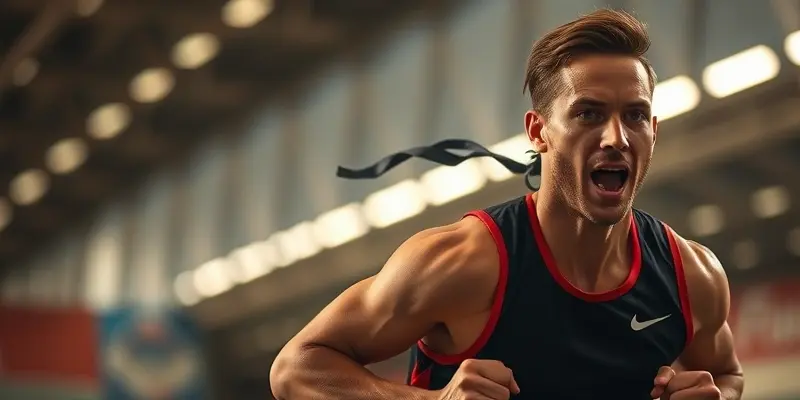Flo-Jo’s Legacy: Why Smart Recovery Matters for Every Athlete
Every athlete faces setbacks—just look at the legendary Florence Griffith Joyner. Flo-Jo’s unforgettable speed and spirit at the 1988 Olympics were forged not just through raw talent, but through overcoming injuries and prioritizing wellness. Her story proves that true greatness lies not only in training hard, but in recovering smarter. Whether you’re a weekend warrior or a serious competitor, making smart choices around recovery and injury prevention ensures your long-term success and enjoyment in fitness.
Common Sports Injuries: What to Watch For
Let’s start by identifying some of the injuries that can impact athletes of all levels:
- Hamstring Strains: Common in sprinters and soccer players, these can result from overexertion or poor warm-ups.
- Shin Splints: These affect both runners and beginners who push too hard, too soon.
- Achilles Tendinitis: Repetitive impact and insufficient stretching often lead to this persistent heel pain.
- Knee & Joint Pain: Overuse, faulty footwear, or lack of muscle strength can sideline anyone, from weightlifters to walkers.
By understanding the most likely injuries, you can focus on prevention and spot warning signs early.
Evidence-Based Recovery Steps: Your Playbook for Healing
Rest and a Gradual Comeback
First rule of recovery? Respect your body’s signals. Initial rest lets the healing begin. Follow it up with a gradual reintroduction of activity—no skipping steps! Structured rehab (like physical therapy exercises) helps strengthen weak areas, so you come back stronger.
Practical example: If you’re healing a hamstring, start with gentle stretching, move to bodyweight exercises, then progress to light jogging before sprinting again. For a detailed step-by-step process, check our injury recovery checklist.
The Power of Cross-Training and Mobility
While an injury heals, don’t stop moving—just move differently. Swimming, cycling, or simple yoga keep your heart healthy and mood up, without stressing the injured area. Add foam rolling and daily stretches to boost flexibility and prevent stiffness.
Nutrition for Faster Healing
Eat Your Way to Recovery
Food is more than fuel—it’s medicine. Here’s what your plate should include:
- Protein: Chicken, eggs, beans, and Greek yogurt repair muscles and support your immune system.
- Collagen-Rich Foods: Bone broth and fish help heal ligaments and tendons.
- Anti-Inflammatory Choices: Salmon, chia seeds, blueberries, and spinach reduce inflammation, helping you bounce back faster.
A real-world tip: After a tough session or while recovering, make a smoothie with Greek yogurt, berries, and spinach for a nutrition-packed boost.
Making the Most of Tools & Gadgets
Simple Devices to Boost Recovery
Technology can be your ally. Consider:
- Compression Sleeves: Great for reducing soreness after long runs or intense gym sessions.
- Electric Muscle Stimulators: Used by pros (and increasingly, amateurs) to move nutrients into recovering tissues.
- Cold Therapy Packs: Help with swelling and pain, especially right after an injury.
Note: Always weigh the pros and cons—these tools support healing, but can’t replace solid rehab or professional advice.
Mental Resilience: The Secret Weapon During Setbacks
Staying Strong Inside and Out
Physical healing is only half the journey. A positive mindset propels you forward. Visualization—mentally rehearsing your comeback—boosts motivation. Set small, achievable goals and celebrate milestones. Lean on your support network; even an encouraging text from a training buddy can lift your spirits.
Flo-Jo overcame not just physical challenges, but also adversity and self-doubt. Her psychological strength inspired millions—and it can inspire you to keep pushing. Learn more about the power of visualization for healing to support your mental resilience.
Long-Term Performance & Prevention: Building a Resilient Athlete
Your best performance is a marathon, not a sprint. To stay in the game long-term:
- Regularly monitor your body for early signs of overuse or stress.
- Balance strength, flexibility, and mobility in your training plan.
- Join a fitness community to stay accountable, motivated, and inspired.
Let Flo-Jo’s holistic approach—combining hard work with self-care, bold individuality, and resilience—guide your fitness journey.
Conclusion: Your Path to Stronger, Healthier Fitness
Every athlete, from beginner to pro, faces obstacles. But with smart injury prevention, attentive recovery, sound nutrition, effective tools, and a strong mindset, you can overcome setbacks and thrive. Use these tips as your blueprint, and let legends like Flo-Jo remind you: your limits are only where you set them.
At Gympulse Club, we’re here to help you stay strong, inspired, and empowered—both on and off the track. Ready to take the next step? Your journey to sustainable fitness starts now.

